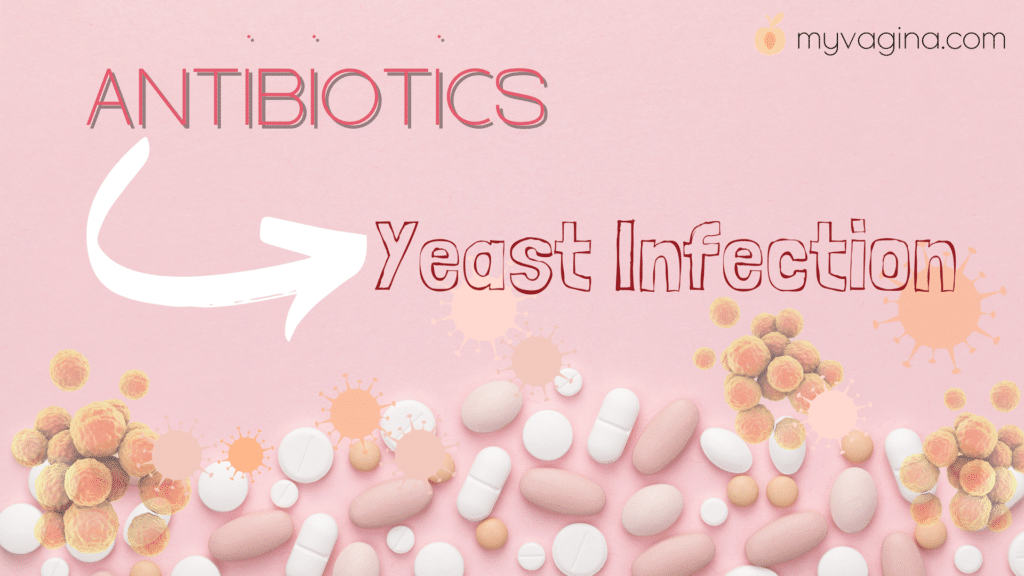Why you get a vaginal yeast infection after antibiotics
When you take antibiotics for any reason, they kill off your good bacteria as well as the bad bacteria. What antibiotics don’t do is kill yeasts, like Candida species. Without the good bacteria to oppose the yeast as they naturally would in your intestines and vagina, the yeast can proliferate, and this results in a yeast bloom. This yeast bloom is occurring in your intestines as well as your vagina, because 98 per cent of yeast originates in the gut.
Read more about yeast infections at our yeast infection page.
Your vaginal yeast infections are usually due to a yeast bloom in your belly, so you can treat both your belly yeast and vaginal yeast with fast (ish) effects. Ignoring your yeasty belly means you become more prone to vaginal yeast infections in future, so deal adequately with your intestinal bacteria, and you’ll soon see results.
Yeast don’t live long without food (carbs – all your favourite ‘white’ foods – bread, pasta, pizza, burgers, white rice, potatoes) and probiotic bacteria fight yeasts for room and board in your gut. Starve and kill the yeast – they soon die off and balance is restored.
Yeast infections can cause itching, rawness, soreness, cuts and tears, and post-antibiotics yeast infections can be particularly harrowing. This is because normally you would notice if you were getting a yeast infection before it actually flared up, and could do something about it before it got so bad that you were raw and sore with cottage cheese discharge and that unbelievable itch. After (or sometimes during) antibiotics, the yeast infections can come on strong and fast.
How to stop an antibiotic-driven yeast infection before it happens or stop it in its tracks
- Whenever you take antibiotics, also take a broad-spectrum refrigerated women’s probiotic, but take it at the opposite time of the day than your antibiotics. It will still help, even though your antibiotics will kill most of them the next day. Keep doing it.
- Once your antibiotic course is finished, take one probiotic in the morning and one at night.
- Avoid overdoing the carbs during and after your antibiotics – yeast loves sugary foods and simple carbs like bread, white rice, potato, pasta, cakes, biscuits, sugary drinks. You can stop a bloom in its tracks by altering your diet for a few days when you get a yeast infection.
- Eat live fermented foods like yoghurt, milk kefir, water kefir, kombucha, kimchi, and sauerkraut. It must be alive! Pasteurised ferments are useless.
- Get an over-the-counter vaginal antifungal treatment to help keep symptoms low until the good bacteria can make their way through your system and fight the yeast.
- Give these treatments a day or two to work – they are not instant.






